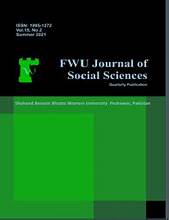Estimating The Socioeconomic Factors Associated With Carbon Emissions at The Household Level For a Sustainable Future In Pakistan. A Case Study of Urban And Peri-Urban Areas of Faisalabad
Abstract
Ever-accelerated urbanization and climate change pose significant challenges for sustainability especially in Pakistan. This study examines the social and economic features associated with the emission of CO2 from the household sector in Pakistan. This research concept constructed on the questionnaire and interview-based survey of 280 household respondents from seven major urban and peri-urban areas to estimate carbon emission from residential consumption from Faisalabad city of Pakistan in 2024 through conducting a survey and for carbon metric tons calculation, the web-leading calculator for carbon emission has been used. Carbon emissions in urban areas from the primary sources of household are 0.99 metric tons in urban areas and 0.23 metric tons in peri urban from electricity, Gas, and oil burning, 3.29 and 3.10 from transport carbon emissions respectively in urban and peri-urban areas. Secondary Carbon emission sources contribute 2.520 metric tons in urban areas and 2.02 in other areas. These results indicate that socio-economic features (Income, house size, family size, and electricity bills) are the main contributors as Overall carbon emission is 3.98 metric tons from urban areas and 3.28 in peri urban area that represents 2/3 of carbon emission in the atmosphere, showing the scarcity of low carbon emission policies in the city. These verdicts highlight emission of carbon due to household’s activties poses serious challenges in achieving the SDGs goals for the green economy and society. Formulating custom-made strategies for areas and household usage is compulsory to minimize the issue and accomplish towards sustainable future for Pakistan.

